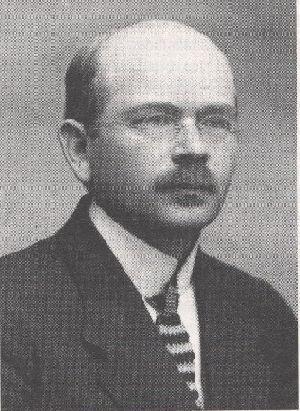E. Y. Pehkonen
Within times, the ownership of the Jokioinen Estate transferred from nobility to common people, and in 1907, the Estate became property of Alfred Kordelin, the richest man in Finland. For him, the Estate was mainly a source of income and after his death, the ownership of the Estate was transferred to the state of Finland on 1st of August in 1918.
The Estate was trusted to a three-man committee, led by Senator E. Y. Pehkonen. He gave up his work as a Senator to dedicate all his time to the affairs of the Estate. Pehkonen moved to Jokioinen and held the largest responsibility in taking care of the affairs of the Estate and the large land reform that was carried out.
One of the first tasks of the committee was to parcel out the fields and to transfer the necessary crofts. Parcelling was led by engineer J. A. Berlin who was an experienced and skillful surveyor and an excellent partner to E. Y. Pehkonen.
Together, the two men were the main architects of the land reform carried out in the area. The Estate had 430 tenant farmers and rented farms, 208 crofters’ lodgings and 32 family right farms and 12 farms freed from paying land tax. Family right farms, farms freed from paying land tax, tenant farmers’ land and the crofters’ lodgings were sold at a reasonable price to be independent farms with long-term loans.
Signing of the bills of sale in the Estate on 3rd of January in 1921 was a historical occasion: then ended the long and dispute-causing subordination of the Jokilääni farmers. The people had thought it arbitrary and wrong.
In addition to farms, also many lots were reserved for construction of habitable buildings. The largest sold pieces of land were the sale of the Ferraria industrial and habitation area and the sales with the syrup factory and the parish. Many new farms and houses were also formed for the former farm hands of the Estate.
Land reform was finished in 1922 and the celebration of freedom was held on 22nd of March in 1922. The land reform turned a new page in the history of Jokilääni, characterized by small-scale farming, awakening entrepreneurship and the subsequent economical and social advancement.
Pehkonen aimed at farms of approximately 30 hectares which would guarantee sufficient vitality. This was why the small-scale farmers had to get low-interest loans to buy additional land. With the help of mortgage loans, the small-scale farmers could fund their projects. This could be seen in diligent construction and the clearance and maintenance of new fields. The field area grew faster than in Tavastia on average, and animal husbandry even more. The most prominent growth was in agricultural technology. A burden had been lifted off of Jokioinen and this was clearly visible.
Pehkonen also served as the Chair of the Municipal Council and he had a prominent role in getting a small-scale farmer school to Jokioinen. Towards the end of the parceling work, Pehkonen hired an agricultural instructor to the Estate, who was to work in the whole Jokilääni. As the frontman of the Jokioinen Farmer Society, he took part in the instruction work himself. He was also involved in various other projects, for example in founding the dairy and the consumer cooperative.
The Estate lost its previous position of power, but it still was economically and mentally prominent. Agricultural schools and research facilities were situated on the Estate grounds. With them, Jokioinen received an influx of experts in different fields, and study trips to Jokioinen were made even from so far as from the Baltic countries. The committee functioned until the end of 1921 and after that, Pehkonen took care of the Estate’s affairs as a chief executive officer until 1925 when he became the provincial governor of the Oulu province.
E. Y. Pehkonen stayed in Jokioinen only for a few years, but during that short time he managed to initiate and bring into completion many projects of importance to the future development of the municipality. In the history of Jokioinen, he is, along with von Willebrand, the most important single figure.
Written by Laila Liski
Sources:
Jokioisten historia kartanosta kunnaksi |
|
![Logo [Jokioisten kunta]](client/jokioinen/images/logo.png)
![Logo [Jokioisten kunta]](client/jokioinen/images/logo_blue.png)
![Logo [Jokioisten kunta]](client/jokioinen/images/logo_green.png)
![Logo [Jokioisten kunta]](client/jokioinen/images/logo_orange.png)
![Logo [Jokioisten kunta]](client/jokioinen/images/logo_yellow.png)
![Logo [Jokioisten kunta]](client/jokioinen/images/logo_jokilaani.png)



![Logo [Jokioisten kunta]](client/jokioinen/images/footer_logo.png)

